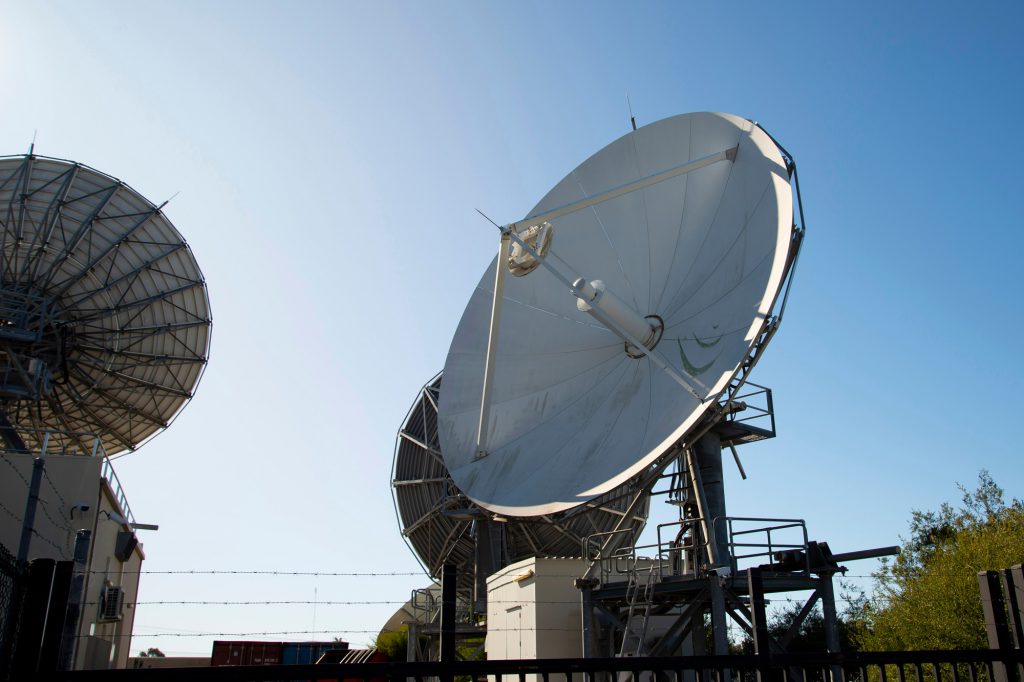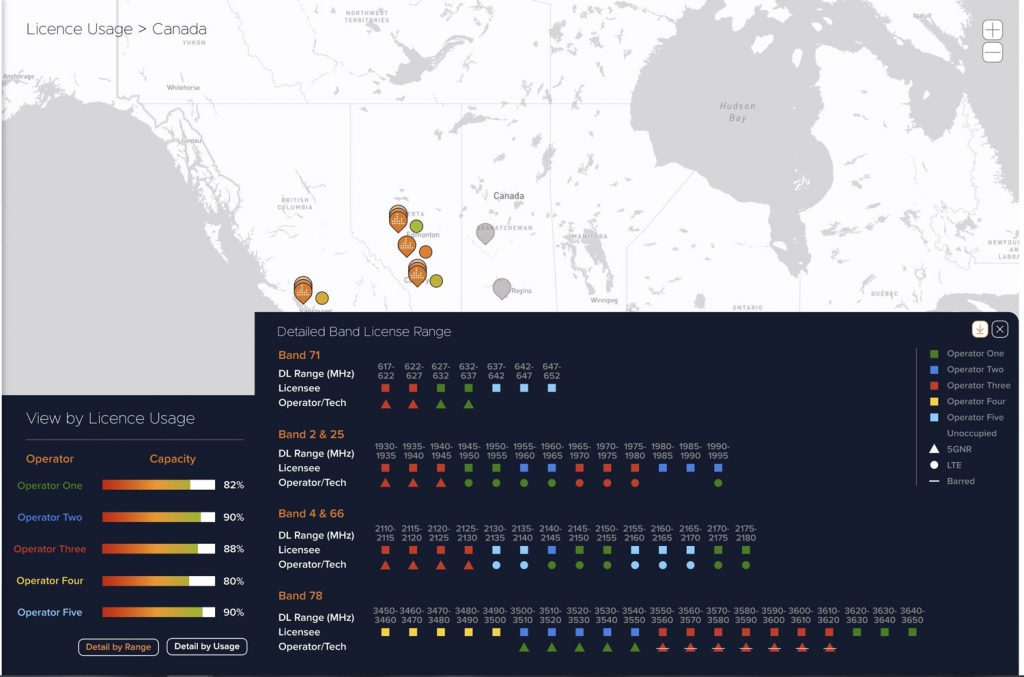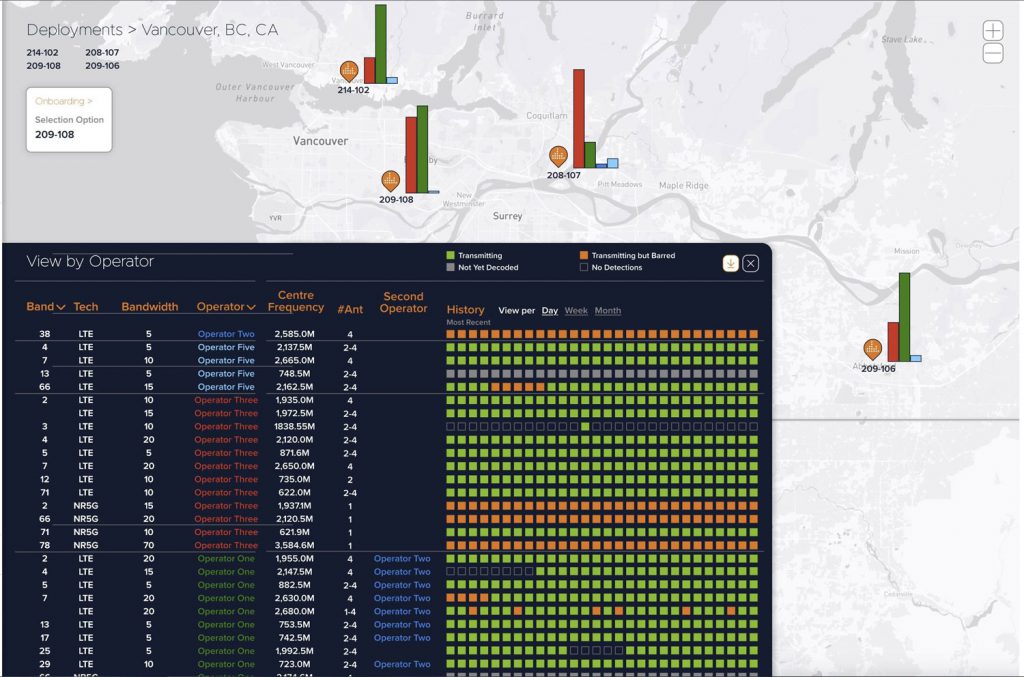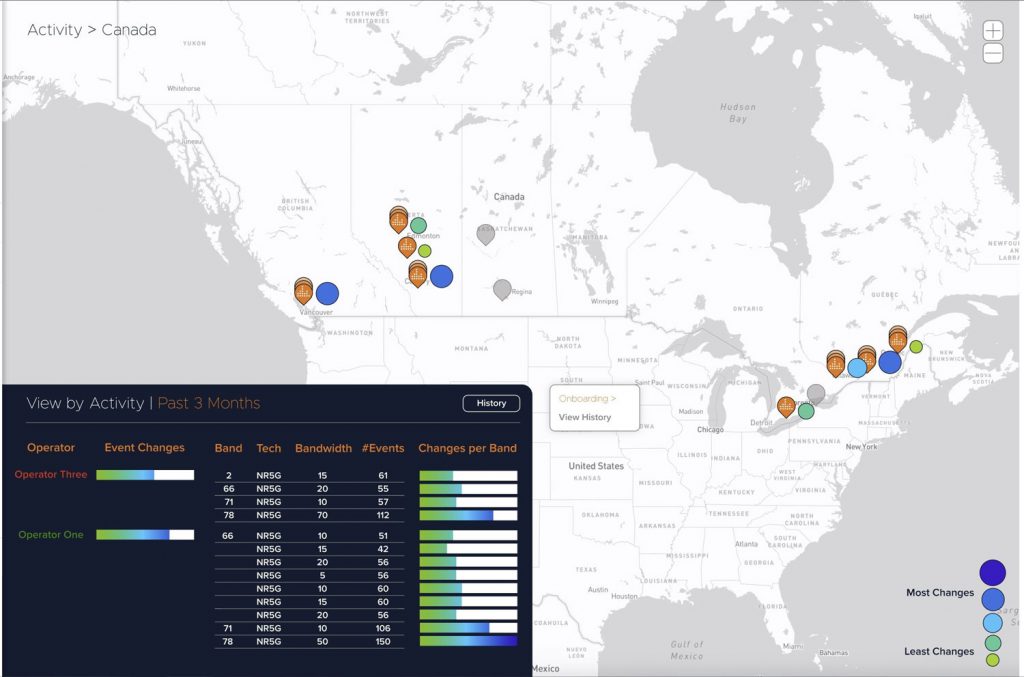Identify Cellular Interference in
Satellite Downlinks
Know signal disruptions and interferences before they negatively impact your bottom line.
Resolving satellite downlink interference is vital for satellite communication reliability.
Satellite ground stations traditionally had abundant C-band spectrum. However, with much of it repurposed for new 5G services, conflicts are on the rise. Balancing the expansion of 5G infrastructure with safeguarding satellite communication services is crucial for the seamless coexistence of both technologies in our modern interconnected world.

93% of satellite operators encounter interference annually. Over half face monthly disruptions and 17% deal with continuous interference in their daily operations*.
*Satellite Innovation Group (https://satig.space)
Collecting data is easy and fast
By positioning our thinkRF Spectrum eXperience Management (SXM) nodes in strategic locations, we can identify in seconds what infrastructure has been deployed by which carrier, and what technologies are being used. SXM nodes are plug ‘n play. Data collection is continuous, and it is available in real-time.

View License Usage

View Operators

View Activities
Conflicting Communications
This use case study discusses key factors contributing to the satellite downlink interference which cause signal degradation or complete loss of data. You will also find fundamental types of interference that 5G systems cause for satellite systems.
Tip of the day: You will discover the real-life insights where one of the Tier 1 operators detected not only the 5G towers, but also channel, cell, location and power readings that were causing interference!